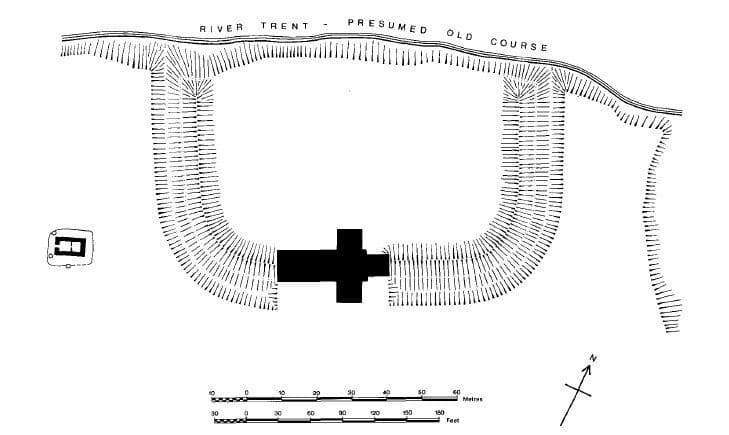Workshops from a Viking camp dating to the winter of 873-4, have been unearthed by a team of archaeologists from the University of Bristol.
The campsite, located in the small Derbyshire village of Repton, has been known since the 1970s, but these new discoveries have found evidence over a much larger area, for workshops and ship repairs.
The results will be aired on Digging for Britain on BBC Four at 9pm (GMT) on Wednesday, November 22. The series is presented by former University of Bristol academic Professor Alice Roberts.
According to the Anglo-Saxon Chronicle, in 873, the Great Army ‘moved from Lindsey to Repton and there took winter quarters’, expelling the Mercian king Burghred, and annexing his kingdom.

The choice of Repton was partly because of its location on the river Trent, but also the location of a monastery that housed the remains of several Mercian kings.
In 1975, archaeologists, led by Professor Martin Biddle and Birthe Kjølbye-Biddle, uncovered a ‘D’ shaped enclosure on the banks of the Trent, covering around 1.5 hectares that was thought to be the Viking camp.
Recently, doubts have been suggested for this interpretation, as some have considered the enclosure to be too small to house the Great Army, as another Viking camp at Torksey (Lincolnshire) covers around 26 hectares.
The new excavations at Repton, directed by Cat Jarman and Professor Mark Horton of the University of Bristol’s Department of Anthropology and Archaeology, have focused in the area to west and outside of the D-shaped enclosure.
Geophysics, including ground penetrating radar, revealed structures including paths and possible temporary buildings.
Excavations showed these to be gravel platforms that may have held ephemeral timber structures or tents with deposits including fragments of Saxon millstones and a cross fragment from the monastery.
Associated were broken pieces of weaponry, including fragments of a battle-axes and arrows, and evidence for metal working.
Also found were substantial numbers of nails, two of which had roves, the particular feature of Viking ship nails, as well as several lead gaming pieces.
These are of a type that has been found in large numbers at the camp in Torksey and appear to be specifically connected to the early Viking armies.
Cat Jarman, a PhD student at the University of Bristol, funded by the Arts and Humanities Research Council (AHRC), said: “Our dig shows there was a lot more to the Viking Camp at Repton than what we may have thought in the past.
“It covered a much larger area than was once presumed – at least the area of the earlier monastery – and we are now starting to understand the wide range of activities that took place in these camps.”
The Digging for Britain programme will also reveal some exciting new results from Cat’s PhD research into a mass grave discovered at the site in the 1980s.
During the earlier excavations, a mound a few metres to the north of the new excavations uncovered a charnel grave of nearly 300 people, hypothesized to be the Viking war dead.
But previous radiocarbon dates suggested many of the bones dated to the 7th or 8thcenturies, meaning they could not belong to the Viking army.
Using new radiocarbon dates and modern isotope data to account for marine food consumption, Cat’s research has revealed that the remains do, in fact, all fit a date of 873 after all and are therefore completely consistent with a burial of Viking battle dead.
The remains were placed in a deliberately damaged Saxon building along with Viking weapons and artefacts.
The building also contained evidence of use as a workshop by the Vikings before it was converted into a charnel house.
The Bristol team located a path linking their workshop area and the charnel house, further strengthening the link between the two.
The excavations also help highlight the real conditions behind the Viking invasion of England, recently popularised by dramas such as Vikings (History Channel) and The Last Kingdom (BBC).
Professor Mark Horton, who was also involved in the earlier excavations, said: “It is so exciting to be able to come back 30 years later, and to be able to use cutting edge archaeological methods to reassess our earlier work and conclusions. So much has moved on in archaeology since 1980s.”
The excavation team included undergraduate students from Bristol, several of whom are now working on dissertations on artefacts discovered at the site.
The team also worked closely with local groups, including the Repton Historical Society, and continue to work with Derby Museum on the interpretation and classification of the artefact material from the original excavations.
Header Image: Example of a Viking camp – Image Credit : mararie (https://tinyurl.com/ybbx9qgu)





